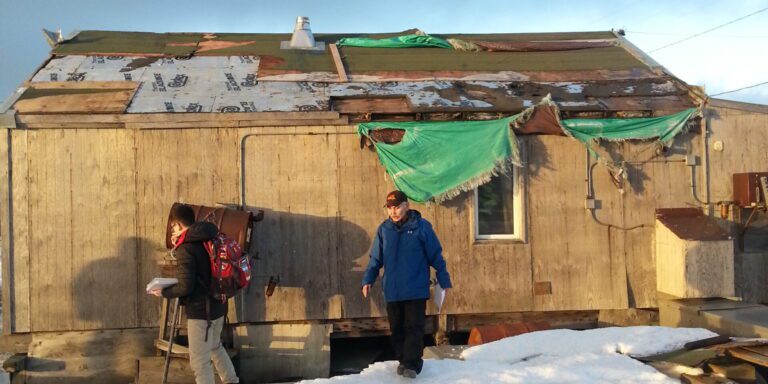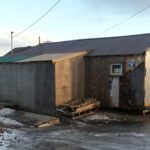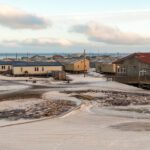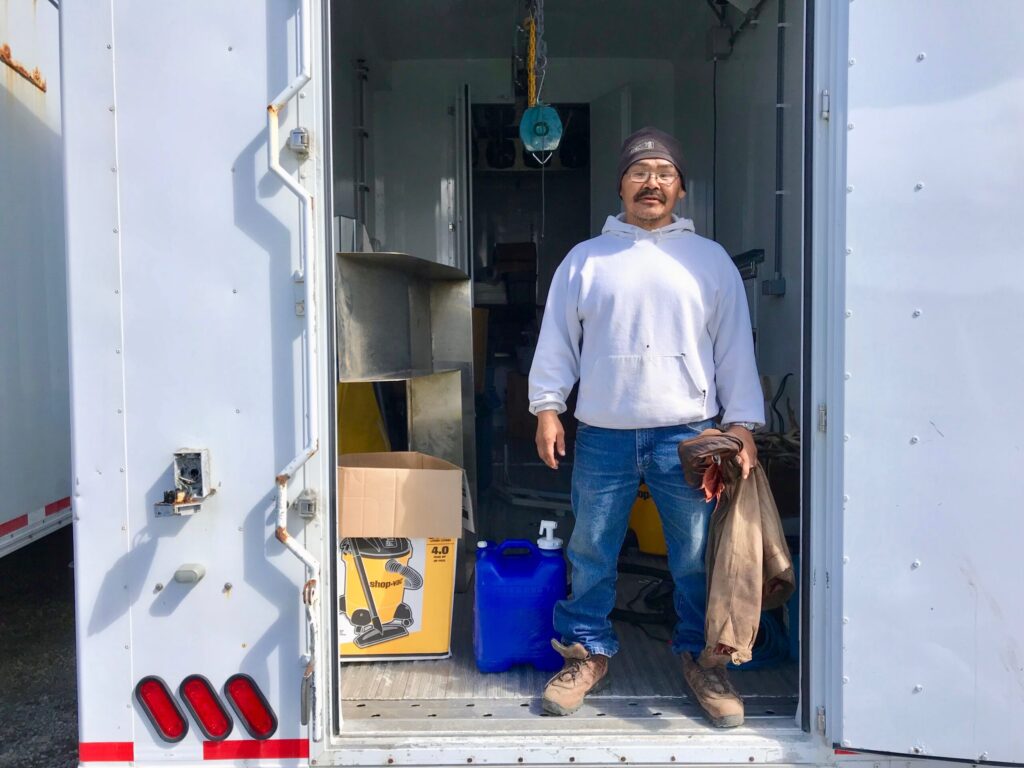In the final days of 2016, a Bering Sea storm battered St. Lawrence Island, causing wind and water damage to many buildings in Savoonga. The community declared a local disaster and asked for assistance from the State in order to restore their livelihoods. KNOM’s Davis Hovey traveled to Savoonga to observe the recovery process.
As of Friday, January 6th, 30 residents are claiming storm damage to their homes or shelters, along with the community’s teen center and the City office. Each building that suffered damage from the winter storm has to go through a damage assessment conducted by the Alaska Department of Homeland Security and Emergency Management, or DHSEM.
John Ramsey from the Alaska DHSEM describes the criteria he’s looking for when conducting a damage assessment:
“We look and see if the building is: number one, livable or not, if it’s a home, if there (are) any damages, what the extent of the damage is, so we know if it’s habitable or not. If there’s any emergency housing that needs to be done for individuals or families at the time a disaster happens, and, then, basically just do a tally to see what the impact on the community is for a disaster,” explained Ramsey.
Ramsey was in Savoonga back in 2011 after another storm left the community without power for a period of four days. Myron Kingeekuk, the mayor of Savoonga, believes this latest storm caused more structural damage than the 2011 one. The storm’s impact was evident as we spoke outside one damaged home.
“We’re at Harry’s house right now. After the storm died down we repaired the roof, and we just found out that the attic got damaged by water. So he tore off his whole carpet in there, so hopefully, we get help for her and we still got to look at lots of homes,” Kingeekuk said with a sigh.
Our crew of two DHSEM employees, two Red Cross representatives, Mayor Kingeekuk, and myself walked from home to home trying not to fall on the slick, ice-covered roads. Karl Edwards, an Emergency Management Specialist with DHSEM, led the damage assessment by asking each homeowner more or less the same questions.
“After the roof fell off or came off, did you get any water damage? Did you have any electrical problems, is the Toyo (stove) still working,” asked Edwards.
Throughout the assessment, we saw some buildings were missing chunks of siding or roofing; others had tarps covering some openings where walls used to be, and many structures had foundation issues.
During the height of the storm on New Year’s weekend, when winds were reported to be gusting at more than 117mph, Savoonga’s school was used as a safe haven. Principal Ralph Lundquist and most of the school employees were out of town for winter break that weekend, creating a poorly supervised environment for the 93 community members staying in the temporary shelter.
The Disaster Program Manager for the Red Cross in Fairbanks, Michael Verrier, says the Red Cross can provide shelter management training, free of charge, to help community members in Savoonga become self-sustaining during storm disasters.
“We have volunteer shelter instructors that can help give shelter training and do a shelter exercise with interested people that are within the community, so that when an event like this happens in the future, there’s people that are within the community that are able to open the shelter, keep it safe, keep it secure as best as possible,” Verrier emphasized.
Verrier and his colleague from the Red Cross stayed in Savoonga until Sunday to complete their own damage assessment in conjunction with the DHSEM. Verrier says the Red Cross could provide financial assistance to individuals in the community so they can repair their damages, but the Red Cross cannot buy materials directly for them.
Ultimately, Savoonga is asking the State for assistance through a disaster declaration letter, but Karl Edwards with DHSEM explains there is a limit to the needs his department can meet. So the rest of the aid would have to come from either volunteer organizations, the Governor, or both.
“They requested assistance from the State, from my office to help them through the disaster process, so that entails myself and some others coming out, looking at the community, trying to total up the damage, and then, we present it to the Disaster Policy Cabinet,” stated Edwards. “The Disaster Policy Cabinet will make a recommendation to the Governor, and then, the Governor will make the final decision as to what we’re going to do for this community.”
Mayor Kingeekuk says he hopes this disaster declaration letter will result in his community getting the help it needs. It is unknown how long it will take for a disaster declaration letter to be submitted to the Disaster Policy Cabinet, but Edwards says confidently that the process will be expedited.











